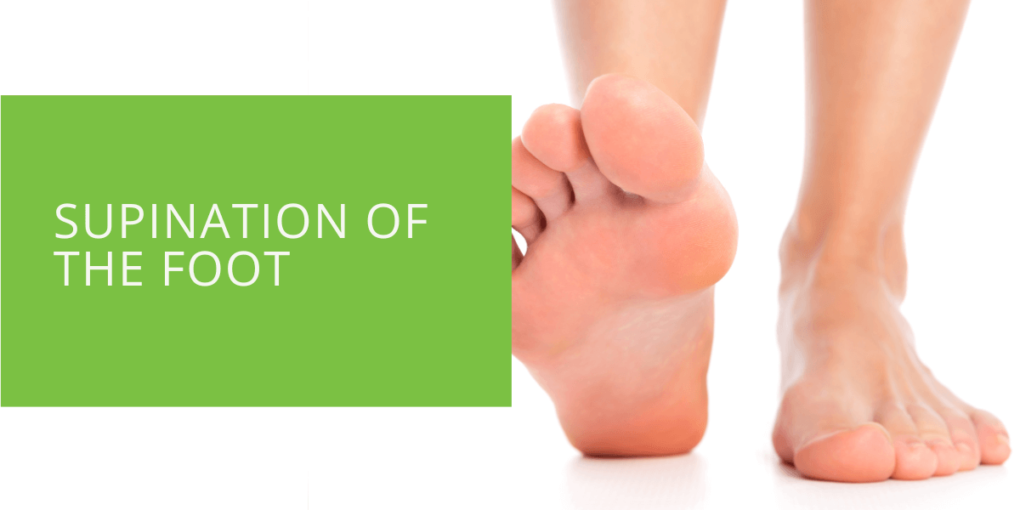Supination of the Foot
Supination of the foot, also known as underpronation, is a common condition where the foot rolls outward while walking or running. This can cause excessive pressure on the outer edge of the foot, leading to pain and discomfort. In this article, we'll discuss the causes, symptoms, and treatment options for the supination of the foot.
Understanding Supination of the Foot
What is Supination of the Foot?
Supination of the foot occurs when the foot rolls outward during walking or running, leading to an uneven weight distribution on the foot. This can cause the foot to supinate, or roll outward and lead to excessive pressure on the outer edge of the foot.
Anatomy of the Foot
To understand the supination of the foot, it's important to know the anatomy of the foot. The foot comprises three arches - the medial longitudinal arch, the lateral longitudinal arch, and the transverse arch. These arches help distribute weight evenly across the foot and provide shock absorption during walking and running.
Pronation and Supination
Pronation is the opposite of supination and occurs when the foot rolls inward during walking or running. People who overpronate have flat feet or low arches, while people who supinate have high arches.

Causes of Supination of the Foot
Inherited Foot Structure
Supination of the foot can be caused by an inherited foot structure where the foot is naturally inclined to roll outward. People with high arches are more likely to supinate, as the arches are less flexible and provide less shock absorption.
Worn-out Shoes
Worn-out shoes with uneven soles can cause the foot to roll outward during walking or running. This can lead to supination of the foot and increase the risk of foot injuries.
Abnormal Gait
An abnormal gait, such as walking or running with your feet turned outward, can cause supination of the foot. This can lead to excessive pressure on the outer edge of the foot, causing pain and discomfort.
Symptoms of Supination of the Foot
Pain and Discomfort
The most common symptom of supination of the foot is pain and discomfort on the outer edge of the foot. This pain may be felt during walking or running and may worsen over time.
Ankle Sprains
Supination of the foot can increase the risk of ankle sprains, as the foot is more likely to roll outward and cause the ankle to twist.
Foot Injuries
Supination of the foot can also increase the risk of foot injuries, such as stress fractures, plantar fasciitis, and Achilles tendinitis.
Shin Splints
Supination of the foot can also lead to shin splints, a condition where the muscles and tendons around the shin bone become inflamed.

Treatment Options for Supination of the Foot
Orthotics
Orthotics, such as insoles or custom-made shoe inserts, can help support the arches of the foot and prevent supination. Your podiatrist can recommend the right type of orthotics for your specific needs.
Stretching and Strengthening Exercises
Stretching and strengthening exercises can help improve the flexibility and strength of the muscles and ligaments in the foot and leg, including the calf muscles. This can help reduce the symptoms of supination and prevent foot injuries.
Proper Footwear
Wearing the right footwear can help reduce the symptoms of supination of the foot. Shoes with good arch support and cushioning can help distribute weight evenly across the foot and provide shock absorption during walking and running.
Taping
Taping is another treatment option for the supination of the foot. Your podiatrist may apply athletic tape to your foot to help keep it in a neutral position during walking or running. This can help reduce the risk of foot injuries and relieve pain and discomfort.
Surgery
In severe cases, surgery may be necessary to correct foot supination. Surgery may involve realigning the bones or fusing the bones together to provide better support for the foot.
Conclusion
Supination of the foot can cause excessive pressure on the outer edge of the foot, particularly the heel, which can lead to pain and discomfort., but with the right treatment and preventive measures, it's possible to manage the condition. Suppose you are experiencing supination of the foot. In that case, it's important to seek medical advice from a podiatrist who can perform a thorough evaluation, identify the underlying cause of your symptoms, and develop a treatment plan tailored to your specific needs. By understanding the causes and symptoms of supination, you can take steps to prevent and treat this condition and continue to enjoy an active lifestyle.
FAQ
How to treat supination of the foot?
Treatment for supination of the foot can include orthotics, stretching and strengthening exercises, proper footwear, taping, and in severe cases, surgery. Your podiatrist can recommend the right treatment plan for your specific needs.
What does supination of the foot look like?
Supination of the foot can cause the foot to roll outward during walking or running, leading to excessive pressure on the outer edge of the foot. This can cause pain and discomfort in the heel, ankle, and shin, increasing the risk of foot injuries.
What muscles cause supination of the foot?
Supination of the foot is caused by a combination of muscles, including the peroneus longus and brevis, the tibialis posterior, and the gastrocnemius and soleus muscles. These muscles work together to support the arches of the foot and control the movement of the ankle joint.
What causes supination of the feet?
An inherited foot structure, worn-out shoes, abnormal gait, or a high arch can cause foot supination. These factors can lead to an uneven distribution of weight on the foot, causing the foot to roll outward during walking or running.

